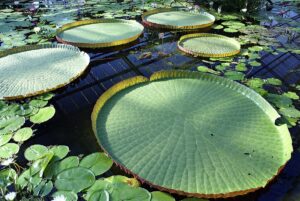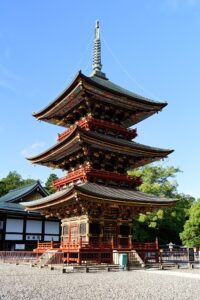Overview (history, characteristics, attractions)
Engakuji Temple is one of the main temples of the Rinzai sect of Buddhism located in the Kita-Kamakura area of Kamakura City, Kanagawa Prefecture. It was founded in 1282 (Kōan 5) by the regent Hojo Tokimune as a memorial for those who died in the Mongol invasion and to promote Zen Buddhism. The temple was founded by the Zen monk Mugaku Sogen, who came from China, and has since become a famous historic temple that is counted among the Five Mountains of Kamakura.
The temple grounds are spread across the mountain slopes, and the moss-covered grounds, ancient trees, stone steps, and corridors create a fascinating landscape. There are many architectural treasures, including the Shariden Hall, a national treasure, as well as the mountain gate, Buddhist hall, and bell tower, making it a popular spot for quiet pilgrimages and strolls. The natural scenery, which changes with the seasons (hydrangeas in early summer, autumn leaves, etc.), is also one of the highlights.
Highlights
- Shariden (reliquary hall): This important building is a building that enshrines Buddha's relics and is sometimes designated as a national treasure. The dignified exterior is a must-see.
- Sanmon Gate (large Sanmon gate): A majestic wooden gate that is a popular photo spot.
- Temple bell (large bell): The old bell tower and the surrounding area give it a historical feel.
- The wide temple grounds and approachThe approach and grounds are surrounded by trees and are perfect for a stroll, allowing you to feel the history in a quiet atmosphere.
- Graves and memorial towers: Graves related to the Hojo clan and numerous memorial towers are scattered around, allowing you to experience the history of the Kamakura period.
- Zen meditation and memorial service experience:Depending on the date, time and events, Zen meditation sessions and sermons may be held, and you may be able to participate by confirming in advance.
Access (nearest station, transportation, etc.)
- Nearest station:Get off at Kita-Kamakura Station on the JR Yokosuka Line and walk for about 3-5 minutes (the entrance to the temple grounds is very close to the station).
- From Kamakura Station:It is just one station (a few minutes) away from Kita-Kamakura by JR. It is also about a 25-30 minute walk. You can also take a bus or taxi.
- From Tokyo:Take the JR Yokosuka Line (direct) to Kamakura. The travel time varies depending on the departure station, but it usually takes about an hour from Tokyo.
- By car:The roads in the area are narrow and parking is limited, so we recommend using public transportation. It is more practical to use a nearby paid parking lot or to use a parking lot in the center of Kamakura and walk.
Estimated stay (estimated time required)
- Just praying and viewing the main temples: 30-45 minutes
- A leisurely stroll around the temple grounds and take photos: 1 to 1.5 hours
- If participating in a Zen meditation session or special exhibition: 2 hours or more
Nearby spots
- Kenchoji Temple (accessible on foot or by bus) — This is one of Kamakura's major temples and is often visited together with Engakuji Temple.
- Meigetsuin Temple (Hydrangea Temple, Kita-Kamakura) — Famous for its early summer hydrangeas, within walking distance of Engakuji Temple.
- Jochiji Temple — A small, tranquil Zen temple on the Engakuji walking route.
- Kamakura Great Buddha (Kotoku-in Temple), Tsurugaoka Hachimangu Shrine, Komachi-dori Street (Central Kamakura) - these are popular tourist spots in Kamakura and can be reached on foot or by bus.
Things to be aware of (crowds, manners, seasonal precautions, etc.)
- congestion:It gets crowded on weekends, holidays, the rainy season when hydrangeas bloom, and in late autumn when the leaves change color. If you want to take your time looking around, we recommend visiting on a weekday or early in the morning.
- Visitor etiquette:There are some areas inside the temple where photography is prohibited and some areas are off-limits. Please follow the signs and instructions of the staff and worship quietly. Please refrain from eating, drinking, or talking loudly.
- Roads and steps:The temple grounds have stone steps, slopes, and wet moss that can make the grounds slippery. Please wear comfortable shoes and be especially careful in rainy weather.
- Barrier-free:There are many historical buildings, and some areas may be difficult to navigate with wheelchairs or strollers. If you need wheelchair access, please check the official information in advance.
- Visiting hours and fees:Visiting hours and admission fees may change depending on the season and events. Please check the official website or local information in advance for the latest information.
(Additional Information) When visiting, it's a good idea to check the official website or local guides for the latest information on temple visits and event schedules. There are many other famous temples around Kita-Kamakura Station, so it's recommended to allow yourself plenty of time to explore the area.



